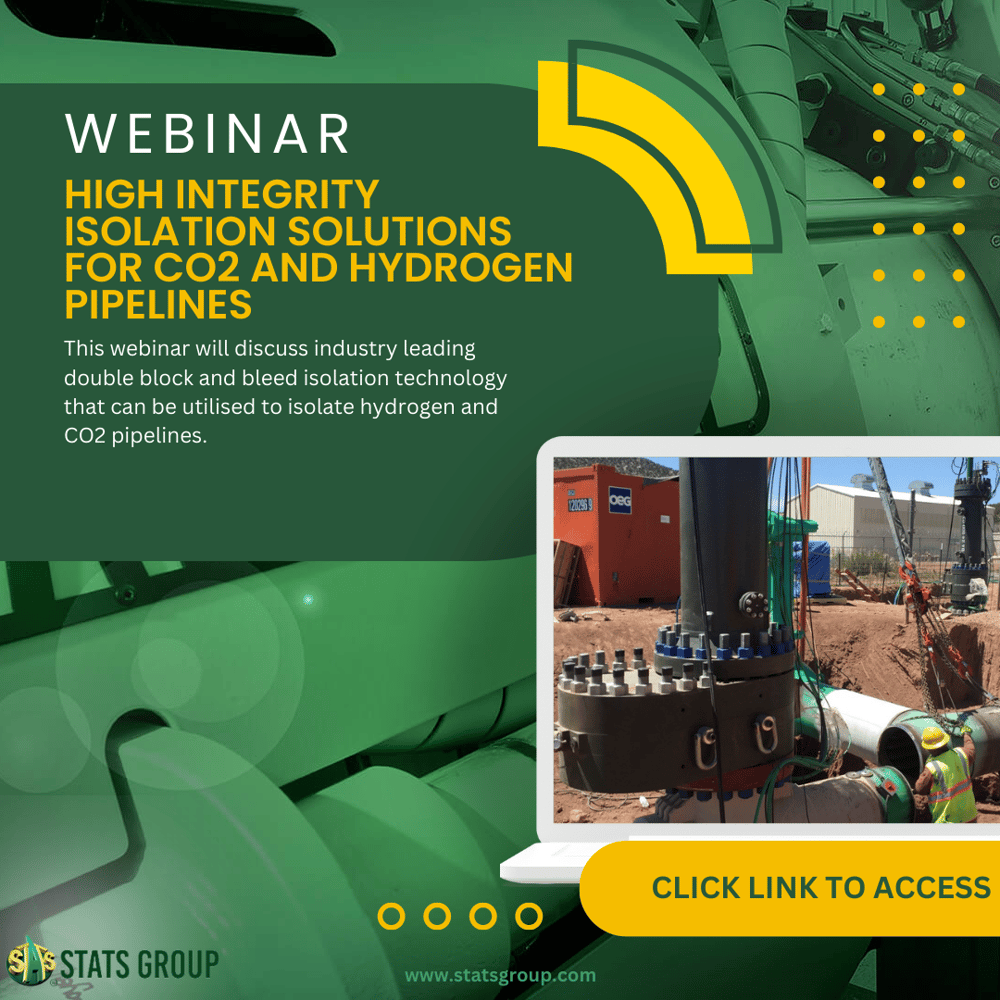
Abstract
As pipeline owners and operators transition to more sustainable energy, STATS double block and bleed isolation tools can provide high integrity isolation in traditional hydrocarbons as well as hydrogen and high-pressure liquid CO2 pipelines.
Billions of pounds are being invested in establishing a hydrogen economy, widely accepted to be one of the most environmentally friendly routes in meeting future sustainable energy requirements. Globally, gas network operators are planning to introduce blended hydrogen to the network, with 21 countries already committed to building a pure hydrogen network by 2040.
Similarly, to meet climate change targets reaffirmed last year at COP26 and to achieve net-zero by 2050, governments of many developed countries are investing heavily in the construction of carbon capture and storage (CCS) projects. 56 commercial-scale CCS projects are now operating around the world and based on current projections, 140 CCS plants could be operational by 2025.
With investment in carbon capture and storage (CCS) and hydrogen accelerating, there is a growing focus on how existing pipeline infrastructure can be repurposed for CO2 and hydrogen transportation. Therefore, the requirement for isolation and intervention technology to safely and efficient isolate these pipelines for repair, maintenance and modifications is increasingly important.
STATS is the only company in the world with an extensive track record of providing hot tapped isolation of high pressure CO2 pipelines, operating at up to 138 bar. Isolating liquid CO2 pipelines has many challenges and project success requires the careful control of CO2 phase-change during venting, and the appropriate selection of steel and elastomer materials to accommodate CO2 service.
This webinar will discuss industry leading double block and bleed isolation technology that can be utilised to isolate hydrogen and CO2 pipelines. A case study will discuss the World’s first, leak-tight double block and bleed isolation of a high-pressure CO2 pipeline system in New Mexico, and how the many challenges faced with isolating liquid CO2 were overcome.
In addition, STATS’s isolation tools are already making a contribution to reducing carbon emissions for their customers. Using proprietary double block and bleed pipeline isolation technologies, localised repair and maintenance worksites can be safely isolated without the need to depressurise large sections of the pipeline, thereby avoiding the need to discharge significant quantities of greenhouse gases into the atmosphere. In the case of large diameter gas pipelines, this can prevent the potential discharge of thousands or tens of thousands of tons of methane emissions into the atmosphere.
Speakers: Ron James & Doug Krokosz